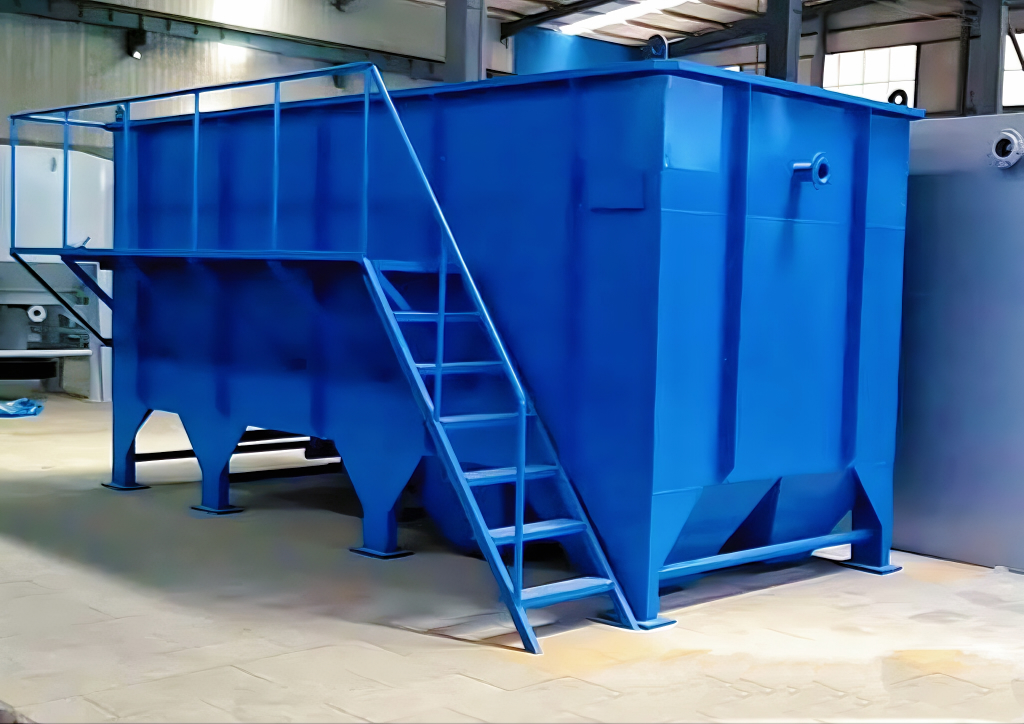Micro Sand Sedimentation

The effectiveness of microsand sedimentation is further enhanced by its integration with the principles of inclined plate sedimentation. This combination dramatically reduces the required sedimentation area and precipitation time compared to conventional settling tanks, while still achieving excellent effluent quality. With over a decade of successful application and numerous engineering case studies worldwide, microsand sedimentation has proven particularly advantageous in scenarios where traditional treatment faces challenges and high effluent water quality is paramount.
These include:
Low temperature and low turbidity water: Where floc formation and settling can be slow.
Large fluctuations in inflow water quality and quantity:
Providing a robust and adaptable treatment process.
High salinity water:
Where conventional coagulation can be less effective.
Raw water containing algae:
Efficiently removing buoyant algal cells.
Industrial wastewater containing high chroma and heavy metals:
Facilitating the removal of both color and metallic contaminants.
The microsand sedimentation process boasts remarkably fast kinetics.
Flocculation can be completed within approximately 10 minutes, and effective precipitation can be achieved in around 20 minutes, making it particularly suitable for areas with limited land availability.
Operational Breakdown:
Coagulation:
Raw water or sewage first enters the coagulation tank. A coagulant, typically an aluminum or iron salt, is introduced at the inlet or within the water inlet pipe and thoroughly mixed using an agitator. This destabilizes the colloidal particles in the water.
Microsand Injection and Flocculation:
The coagulated water then flows into the injection tank, where microsand and a polymer flocculant are introduced. A dynamic mixer within this tank intensifies the contact between the destabilized pollutants, the polymer, and the fine sand particles. The microsand acts as a weight and a surface for the polymer to bind the pollutants together, forming larger and denser flocs.
Floc Maturation:
The mixture then progresses to the maturation tank.
An additional polymer flocculant dosing point is often provided at the entrance to this tank.
Slow mixing within the maturation tank encourages further floc growth and strengthens the flocs, ensuring the microsand becomes fully incorporated as the nucleus of the newly formed aggregate.
The resulting floc diameter can reach sizes exceeding 150 micrometers, significantly enhancing their settling characteristics.
High-Speed Clarification:
The sand-laden flocs then enter the clarification zone, which incorporates inclined plates.
These plates increase the effective settling area and reduce the vertical settling distance, allowing for rapid precipitation of the heavy flocs.
Clarified water is collected at the top by a collecting tank.
Sludge Collection and Microsand Recycling:
The sludge, containing the microsand and the removed pollutants, settles rapidly to the bottom of the clarifier.
A mud scraper collects this sludge towards the central area of the tank bottom, where it is extracted by a microsand circulating pump in a controlled proportion.
This sludge is then pumped through a circulating pipeline to a hydrocyclone.
Hydrocyclone Separation:
Due to the significant difference in specific gravity between the microsand and the lighter sludge particles, the hydrocyclone utilizes centrifugal force to efficiently separate them.
The heavier microsand underflows from the bottom of the hydrocyclone and, because the hydrocyclone is positioned above the injection tank, it can be directly recycled back into the injection tank for reuse in the flocculation process.
The lighter sludge and the majority of the water move upwards and are discharged as overflow from the hydrocyclone, representing the concentrated waste stream that requires further treatment.
This continuous recycling of the microsand makes the process highly economical and sustainable.
Microsand sedimentation offers a robust, rapid, and efficient solution for clarifying challenging water sources, providing high-quality effluent with a significantly reduced footprint compared to conventional sedimentation methods.
